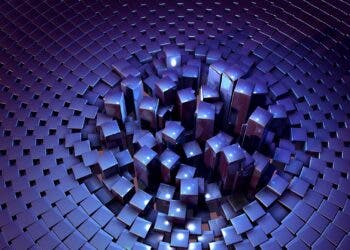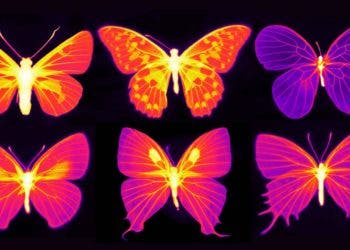MIT researchers have managed to create incredibly cold molecules, much colder than even interstellar space. In this new experiment, sodium potassium (NaK) molecules were brought down to 500 nanokelvins, just a touch more than 0 Kelvin – the absolute lowest possible temperature.

Absolute zero is the lower limit of the thermodynamic temperature scale – −273.15° on the Celsius scale, which equates to −459.67° on the Fahrenheit scale. The laws of thermodynamics dictate that absolute zero cannot be reached using only thermodynamic means, but researchers have been able to cool things close to absolute zero. This MIT experiment was led by physicist Martin Zwierlein, and showed that contrary to common behavior of energy, these molecules are still very energetic when cooled down to extreme temperatures. It also broke the record for the coldest molecules ever created. The currently attained temperature knocks the previous record by a factor of 10!
“We are very close to the temperature at which quantum mechanics play a big role in the motion of molecules,” said Martin Zwierlein, one of the researchers, in a news release. “So these molecules would no longer run around like billiard balls, but move as quantum mechanical matter waves. And with ultracold molecules, you can get a huge variety of different states of matter, like superfluid crystals, which are crystalline, yet feel no friction, which is totally bizarre. This has not been observed so far, but predicted. We might not be far from seeing these effects, so we’re all excited.”
The created molecules did not interact with others at all and exhibited robust dipole moments which acts as the distributions of electric charges in a molecule that directs the way they attract or repel other molecules. Even with simple molecules, you can get some extremely strange properties when you get them ultracooled. Zwierlein said:
“With ultracold molecules, you can get a huge variety of different states of matter, like superfluid crystals, which are crystalline, yet feel no friction, which is totally bizarre. This has not been observed so far, but predicted. We might not be far from seeing these effects, so we’re all excited.”
Sodium potassium was chosen for the experiment because it is representative for a large class of simple molecules. The structure is made of just two atoms, bound together like in a dumbbell-like fashion.
Journal Reference: Jee Woo Park, Sebastian A. Will, and Martin W. Zwierlein. Ultracold Dipolar Gas of Fermionic Na23K40 Molecules in Their Absolute Ground State. Phys. Rev. Lett. 114, 205302






